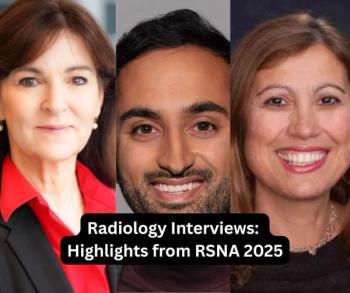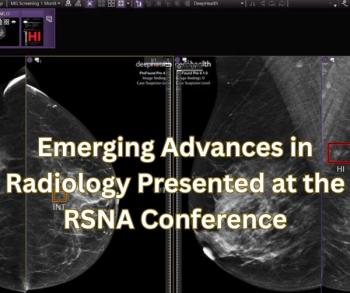
Can Pre-Op Ultrafast MRI Predict Upgrade of DCIS Lesions to Invasive Breast Cancer?
In a new study that may have implications for breast cancer surgery, researchers found that shorter time to enhancement (TTE) on preoperative ultrafast magnetic resonance imaging (MRI) was significantly associated with escalation of ductal carcinoma in situ (DCIS) to invasive breast cancer.
Employing ultrafast magnetic resonance imaging (UF-MRI) prior to surgery for biopsy-proven ductal carcinoma in-situ (DCIS), researchers found that 38 percent of DCIS lesions were upgraded to invasive cancer, according to a newly published study in the
For the study, researchers reviewed data from 68 women (median age of 52) who had biopsy-proven DCIS, preoperative UF-MRI, and preoperative dynamic contrast-enhanced MRI (DCE-MRI).
The study authors found that shorter time to enhancement at a threshold of 11 seconds on preoperative UF-MRI had a 76 percent sensitivity rate for upgrade of DCIS lesions to invasive breast cancer.
“The potential for TTE to predict upgrade of DCIS to invasive cancer is compelling because TTE is clinically available and routinely calculated in clinical practice,” wrote lead study author Rachel Miceli, M.D., who is affiliated with the Department of Radiology at New York University Langone Health, and colleagues. “If further studies with larger cohorts can show improved sensitivity and specificity, this metric may provide a tool for clinicians when counseling patients for surgical planning, specifically for consideration of (sentinel lymph node biopsy).”
(Editor’s note: For related content, see “
Miceli and colleagues also noted a significant association between lesion size on DCE-MRI and upgrade from DCIS to invasive breast cancer. Citing an 88 percent specificity rate and a 56 percent specificity rate, the researchers said 4.4 cm was the optimal threshold for lesion size on DCE-MRI.
The researchers noted that distribution of non-mass enhancement on DCE-MRI was associated with lesion upgrade but conceded this finding was not statistically significant. However, future research looking at the possible impact of features on UF-MRI and DCE-MRI could be worthwhile, according to the study authors.
“Knowing whether a combination of DCE-MRI and UF-MRI features is more predictive of upgrade … than a single factor alone would also be clinically useful,” suggested Miceli and colleagues.
In regard to study limitations, the researchers acknowledged the small sample size and the possibility that lesion enhancement and variables with ultrafast MRI may have been affected by titanium biopsy clip artifacts and post-biopsy changes. While noting previous research showing strong inter-reader agreement for the quantitative TTE evaluation, Miceli and colleagues conceded that individual radiologist assessment of aortic and lesion enhancement factors into TTE. The study authors also noted potential selection bias in the study with MRIs being obtained at the breast surgeon’s discretion.
Newsletter
Stay at the forefront of radiology with the Diagnostic Imaging newsletter, delivering the latest news, clinical insights, and imaging advancements for today’s radiologists.




























